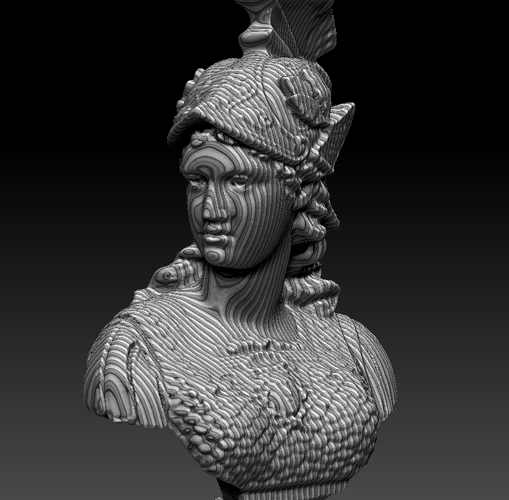Hello
I understand that even the topic’s name is a bit provocative and to some extent it might be, but still… I’ve had some small experience working with the Revopoint Mini for now and, to be frank, it frustrates. Sure, there are some useful and “you got to know it and not just think it’s just a plug’nplay stuff” tips like scanning tilted 45 degrees down and using a lot of “marker objects” along the one you want to scan to track the thing successfully… but still ![]() The software itself from my opinion is not bad at all - yes, it is clumsy and there are annoying settings like camera preamp is resetting to default each time you are trying to make a new scan (no, really, fix it please, it is really easy to make it not forget the last preamp settings one’s use), but theese are merely minor, and the software works merely well in general
The software itself from my opinion is not bad at all - yes, it is clumsy and there are annoying settings like camera preamp is resetting to default each time you are trying to make a new scan (no, really, fix it please, it is really easy to make it not forget the last preamp settings one’s use), but theese are merely minor, and the software works merely well in general
But there is one major issue. Yup, MAJOR one: tracking loss and tracking drift (when you move the scanner back to the origin point with some overlap to make a next “scan line”, but tracking points obviousely misalign with those taken in the beginning). It’s freaking horrible. I’ve gone youtubing on some comparisons of 3D scanners and just by writing “revopoint” in the YouTube’s search, I’ve got watching different reviews, in as seems each of them, where the author goes more than scanning the bust that come along, it goes to “I didn’t get it to work really”. No, really, theese are videos just in the order I’ve watched in last 24 hours considering Revopoint Mini and Pop 2 scanners (links are with timestamps):
Three moments from another video (one for the tracking the cube and the others with a general surface on PC and Android):
This one about POP 2:
And theese are just a few of those reviews and “let’s try to scan something” videos. Agree: “Hey, that guy didn’t use tracking cubes and that one should first cover it with Attblime” and stuff like that. But I think theese are “to improve scanning experience and maximize quality of the result”, but not “if you do all that, maybe you’ll get your scanning merely successfully… of some kind” ![]()
No, I don’t really wish to look like a troll, behave in the style of “Arrgh! Give me my money back!” and stuff like that. Just pointing out the tracking of the Revopoint software is a real mess and it’s algorythms do really need attention and a major overhaul. Really. Don’t know, like taking phone accelerometers for a consideration for a mobil application (since both the scanner and the smartphone might be at the same tripod) and/or limiting maximum shift between neighbour frames. That’s besides that maybe it should be rewritten from the beginning.
By the way, tried to find out will the 3 Axis stabilizer help reduce tracking loss, and bought one locally, but Mini’s size didn’t allow it to be used with it - their (Mini and smartphone) weight is the same, but Mini sticks too much from the gimbal, so the motors can’t work with it.
What is this post about? To point out to the developers that tracking part of the software REALLY needs attention. Because the hardware is really nice, but it falls under the software tracking issues.











